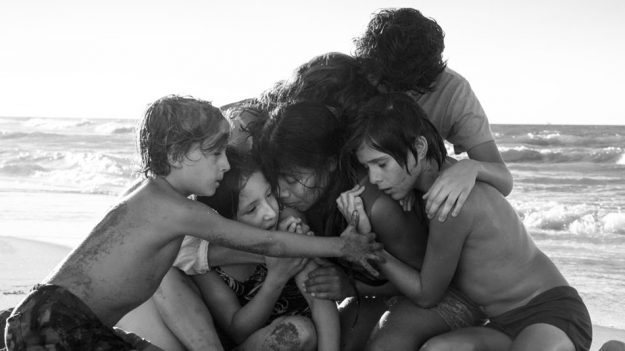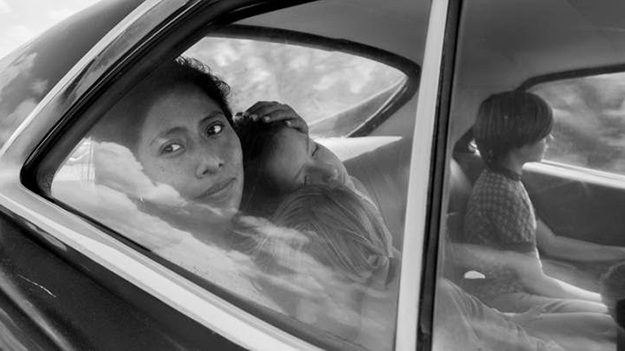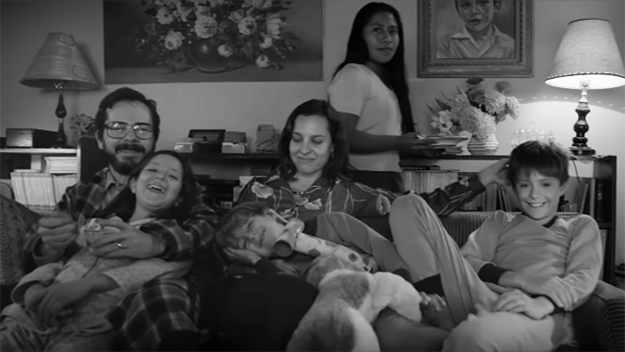As we celebrate Women’s History Month this March, it is also time to celebrate films that feature strong women.

Alfonso Cuarón’s, Roma is a semi-autobiographical story about the sort of characters that are usually ignored by films and society.
Shot in black and white by Cuarón himself – with his regular cinematographer, Emmanuel Lubezki – it is easily one of the most beautiful films of 2018, both visually and in its grand, humanistic themes.
This film is set during a torrid time in Mexico’s history, and is atribute to the women in his life. It takes its audience through a year in the lives of a middle-class family, living in Colonia Roma district of Mexico City.
Cuarón directs in a way which observes our protagonist, a housemaid called Cleo, from a distance and then gradually moves closer because wants the audience to reflect on what they are seeing.

Unlike with other films, where she would be reduced to a background character, doing household chores like scrubbing the floor and doing the dishes (all of which she still does here too), here we are drawn entirely into her world.
The story is told from Cleo’s perspective. Her relationship with the family she works for and how much she is involved in the children’s lives shows how selfless and loving she is.
She is showcased to have a complicated personal life, filled with love, betrayal and unfulfilled dreams. Cleo is certainly not treated as an equal in the family but she surely is deeply loved.
Cleo has been given a loud voice (even though she hardly speaks more than a word or two at a time) and is proudly presented as part of the warm Mexican household.
Even though the major plots of the film revolve around marital issues and political uprisings, it also shines a bright light upon the topic of motherhood, and we come face to face with two sides of it in the film.

Firstly, Cleo has to face the still birth of her child all alone after her lover leaves her knowing she was pregnant. Secondly, there is Sofia, the mother of the middle class family where Cleo works, who later becomes a divorcee mother taking care of four children.
There aren’t many dialogues in Roma, nor are there many close-ups of the characters.The struggles of the characters arereflected and amplified in the cityaround them.
The streets are noisy and busy. Places vibrate with noise as processions and protests rattle through the streets; a hospital delivery room is a chaos, filled with patients and visitors.
.embed-container { position: relative; padding-bottom: 56.25%; height: 0; overflow: hidden; max-width: 100%; } .embed-container iframe, .embed-container object, .embed-container embed { position: absolute; top: 0; left: 0; width: 100%; height: 100%; }
Roma is undoubtingly one of the most powerful films released in the past year and was a well-deserved winner of Academy Award for Best Foreign Language film (2019).
From its black and white frames, to the simplicity and rawness of the characters, it was a complete package.
It is truly a feminist fable that will do more for the movement than other movies and shows that identify as such.
If you haven’t watched Roma yet, it’s available on Netflix. But make sure to stack up on tissues, because there will inevitably be tears rolling down your cheeks at some point during the film.

(function (d) { var js, id = “genially-embed-js”, ref = d.getElementsByTagName(“script”)[0]; if (d.getElementById(id)) { return; } js = d.createElement(“script”); js.id = id; js.async = true; js.src = “https://view.genial.ly/static/embed/embed.js”; ref.parentNode.insertBefore(js, ref); }(document));
